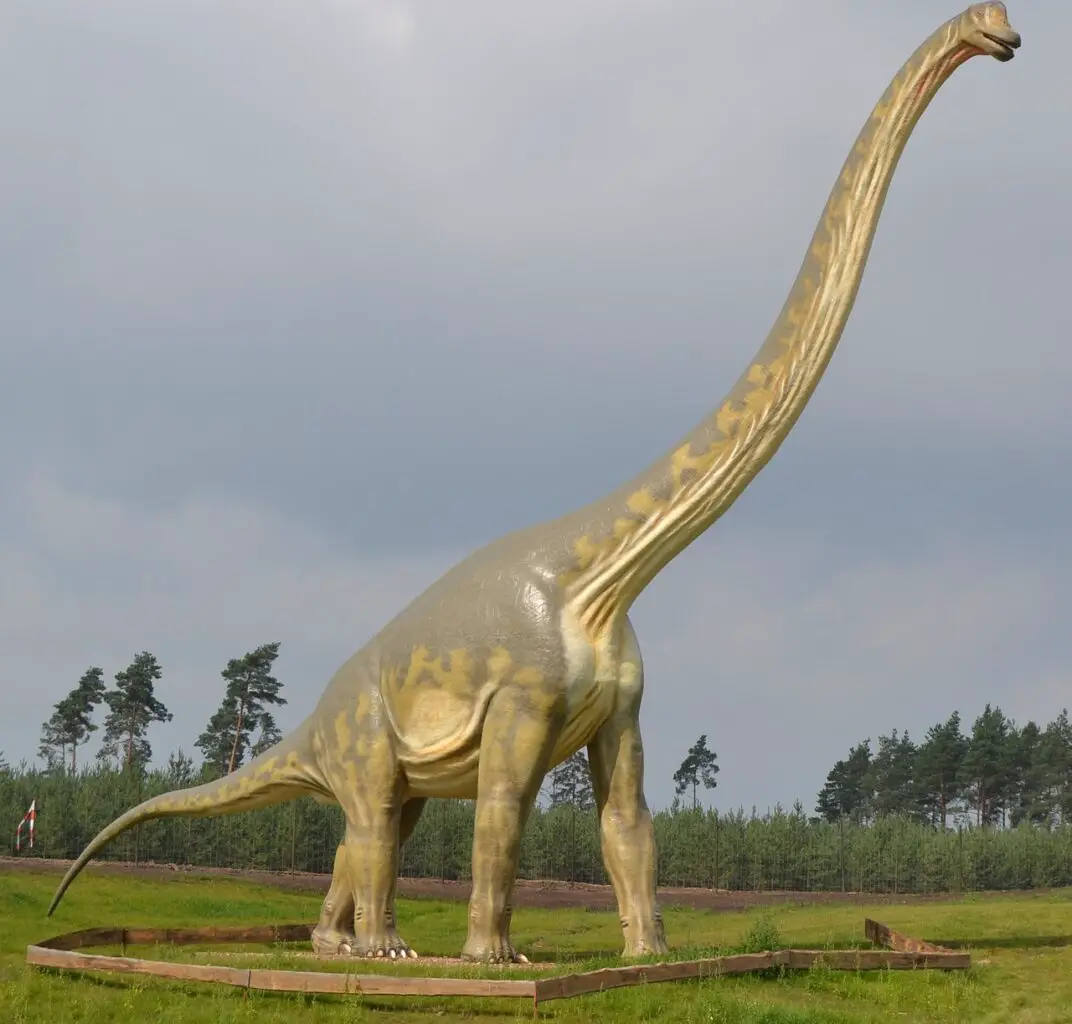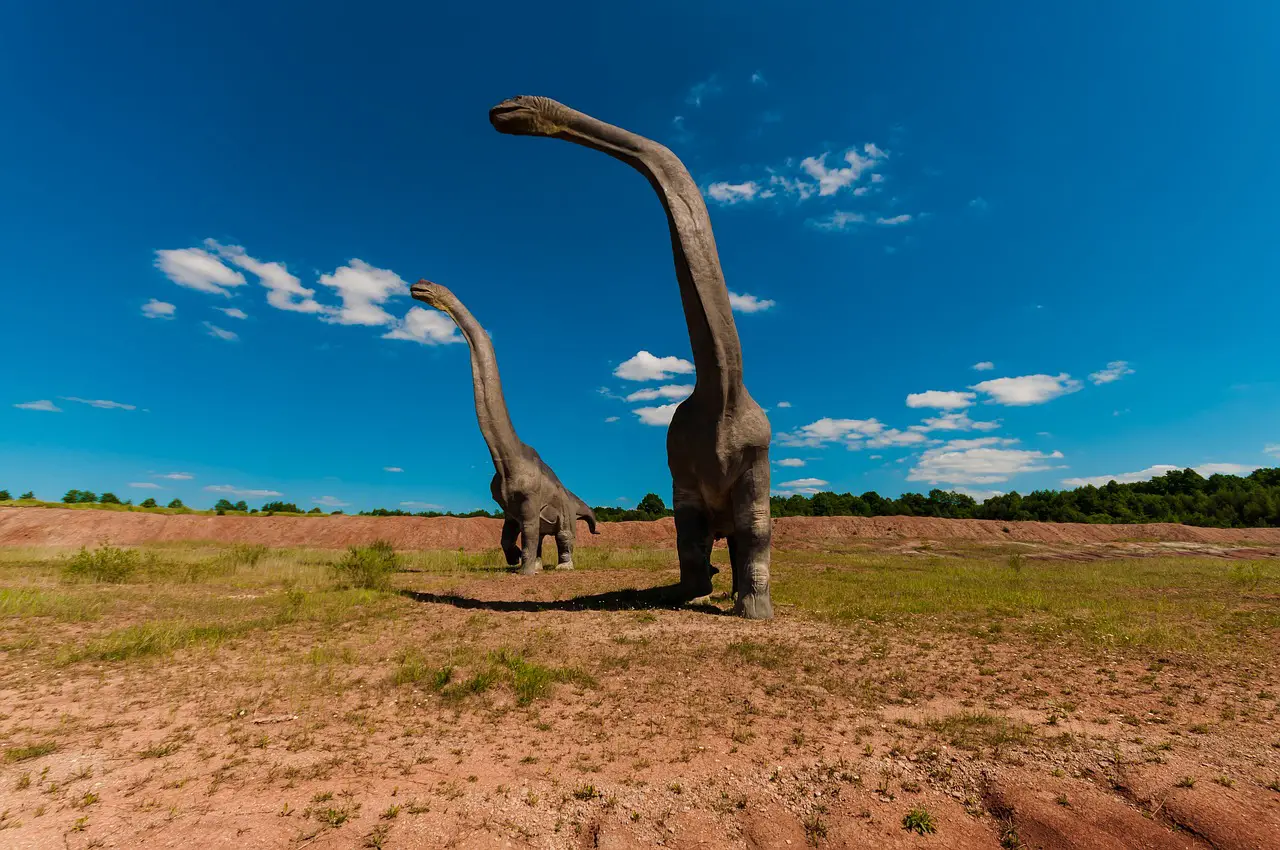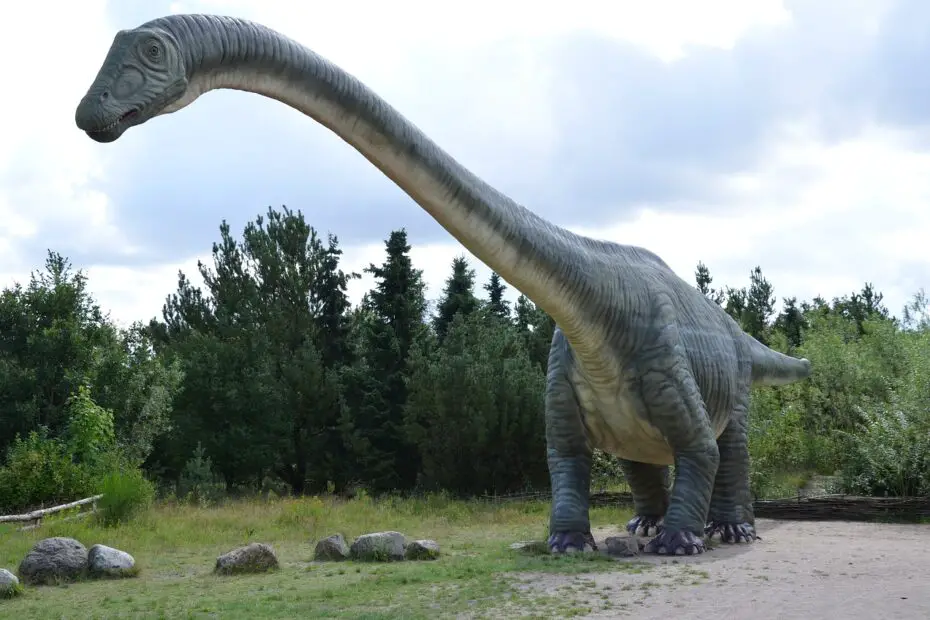Brontosaurus vs Brachiosaurus, what is the difference? When it comes to the world of dinosaurs, there are few creatures as awe-inspiring as the Brontosaurus and the Brachiosaurus. These colossal herbivores, with their massive bodies and long necks, continue to captivate our imaginations. In this article, we will explore the intriguing similarities and differences between the Brontosaurus and the Brachiosaurus, shedding light on these majestic giants of the prehistoric era.
You may also want to read about the top 7 scariest prehistoric animals.
What is a Brontosaurus?
The Brontosaurus, whose name translates to “thunder lizard,” is a genus of sauropod dinosaur that roamed the Earth during the Late Jurassic period. With its iconic long neck, sturdy body, and whip-like tail, the Brontosaurus is often associated with images of vast landscapes and ancient ecosystems.

What is a Brachiosaurus?
The Brachiosaurus, on the other hand, is another genus of sauropod dinosaur that lived during the Late Jurassic period. Known for its incredible height and elongated neck, the Brachiosaurus is sometimes referred to as the “arm lizard” due to its unique front limbs being longer than its hind limbs.
Brontosaurus vs Brachiosaurus – Physical Differences
Size
In terms of size, both the Brontosaurus and the Brachiosaurus were massive creatures. However, the Brachiosaurus generally outshines its counterpart in this aspect. With its towering height of up to 40 feet and a length of approximately 85 feet, the Brachiosaurus stands as one of the largest known dinosaurs. The Brontosaurus, while still colossal, was slightly smaller, measuring around 70 feet in length and 15-20 feet in height.
Neck Length
One of the notable distinctions between the two dinosaurs lies in their neck length. The Brachiosaurus boasts an exceptionally long neck, which allowed it to reach vegetation at towering heights. In contrast, the Brontosaurus had a relatively shorter neck, although still significantly elongated compared to most other animals.
Habitat and Diet
Both the Brontosaurus and the Brachiosaurus were herbivorous dinosaurs, relying on a diet mainly composed of plants. Their massive size required them to consume vast quantities of vegetation to sustain themselves. While they inhabited similar environments during the Late Jurassic period, their specific habitats might have varied slightly due to geographic factors.
Behavior and Lifestyle
As herbivores, both dinosaurs likely spent a significant portion of their time foraging for food. They possessed specialized teeth and powerful jaws to efficiently strip leaves and branches from trees. It is believed that they moved in herds, benefiting from safety in numbers and cooperating to find food and protect against potential predators.

Paleontological Significance
The Brontosaurus and the Brachiosaurus hold immense paleontological significance, as they represent two distinct branches of the sauropod dinosaur family tree. Their fossils have provided scientists with invaluable insights into the evolution and biology of these ancient giants, shedding light on the Earth’s past ecosystems and the diversity of life that once thrived.
Brontosaurus vs. Brachiosaurus: The Debate
It’s worth noting that the Brontosaurus has been at the center of a long-standing scientific debate. In the early 20th century, the Brontosaurus was considered a separate genus from the Apatosaurus, another well-known sauropod dinosaur. However, subsequent research suggested that the Brontosaurus and Apatosaurus were, in fact, the same genus, with the Apatosaurus taking precedence.
However, recent studies and discoveries have reignited the discussion, suggesting that there are enough anatomical differences to support the reclassification of the Brontosaurus as a distinct genus once again. This ongoing debate highlights the dynamic nature of scientific understanding and the continuous exploration and analysis of fossil evidence.
Conclusion
Brontosaurus vs Brachiosaurus, what is the difference? In the prehistoric world, the Brontosaurus and the Brachiosaurus were giants that roamed the Earth, shaping the landscapes they inhabited. Their immense size, unique physical features, and herbivorous lifestyle make them captivating subjects of study for paleontologists and dinosaur enthusiasts alike.
While the Brontosaurus and Brachiosaurus share similarities, such as their massive bodies and long necks, their distinct characteristics set them apart. Whether we classify the Brontosaurus as a separate genus or not, their presence in the fossil record provides us with valuable knowledge about the ancient ecosystems that once thrived on our planet.
FAQs
- Were Brontosaurus and Brachiosaurus contemporaries?
- Yes, both the Brontosaurus and the Brachiosaurus lived during the Late Jurassic period, although they may have inhabited slightly different regions.
- Did Brontosaurus and Brachiosaurus live in herds?
- It is believed that both dinosaurs lived in herds, which provided them with protection and enhanced foraging opportunities.
- How do scientists differentiate between Brontosaurus and Apatosaurus?
- Scientists analyze various anatomical features, including bone structure and proportions, to differentiate between the two genera.
- Can we see Brontosaurus or Brachiosaurus today?
- No, both the Brontosaurus and the Brachiosaurus became extinct millions of years ago. We can only study and admire their fossils.
- Are there any living relatives of Brontosaurus or Brachiosaurus?
- No, these dinosaurs have no living relatives. They belong to a group of animals that went extinct along with many other dinosaur species.
